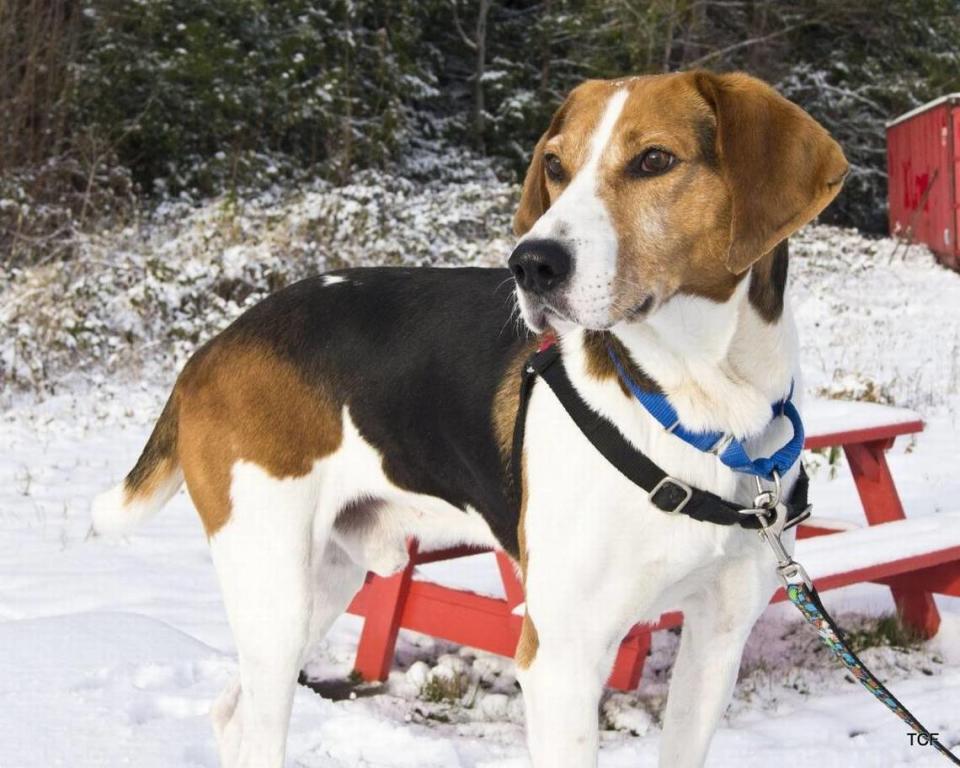Is a dog reactive or aggressive? Here’s the difference and how to deal with a reactive dog
Have you ever approached a seemingly harmless dog that suddenly started barking at you for no apparent reason? Or do you own a dog that gets randomly anxious around certain people or becomes hard to handle when on a leash?
It doesn’t mean the dog is aggressive or poorly trained. On many occasions, the dog may just be what’s called “reactive.”
“An aggressive dog is actively pursuing something; they’re aggressing toward things,” Devin Martin, a trainer at Positive Pets Dog Training in Boise, told the Idaho Statesman. “Reactive is when a situation is created, and then they react to it. So that’s kind of the difference. For me, the reactivity is way more common than aggression.”
There are a long list of reasons a dog may react to certain stimuli — from genetics to frustration to basic maternal instincts — and each situation has to be treated differently. Below is a list of some of the most common reactionary behaviors of dogs:
Frustration-induced - This is the most common type of reaction that Martin said he sees. A frustration-induced response could simply be because a dog is on a leash or behind a fence and wants to go and play with another dog, but because of some sort of restriction, the dog will get frustrated. That could result in barking and growling, which to the untrained eye may look like aggression.
“Frustration eventually turns into vocalization, and then it kind of almost peaks over to what humans would call anger,” Martin said. “This is the most common. A lot of dogs that are on the fence line, who are barking on the fence line, if you just opened up the gate, it would actually be pretty friendly.”
Prey-driven - Some dogs are genetically predisposed to want to hunt. Terriers were bred to hunt and kill vermin, and that reaction can still kick in whenever they see a smaller animal, such as a squirrel or rat. The same can be said for hound dogs, bred to hunt larger animals such as deer.
“That prey can also be transferred into smaller dogs,” Martin said. “So if the small dog is running, if you have a dog that is prey-driven, they’re more likely to react toward that.”

Resource guarding - A common reaction in households; some dogs will often be protective over resources like food and water or even their favorite spot on the couch.
Defensive - A reaction often seen in dog parks, Martin said that a seemingly calm dog might become reactionary if other dogs pick on it. What some people may see as dogs playing, a dog that is being repeatedly body-checked or mounted may bite back in response.
Pain-induced and health - What Martin calls the “grumpy old man syndrome,” dogs can become grumpy and reactionary when in pain. This reaction is particularly common in older dogs that may have arthritis or other old-age illnesses linked with pain.
“Basically, they’re in pain a lot, so you go to move them, or you go to ask them to do something, and they lash out because it’s going to induce pain,” Martin said.
How to respond to and train a reactive dog
Training a reactive dog to not respond to certain stimuli is different for every dog and every reaction, Martin said. No set-in-stone way works for every dog, but a common method is avoiding rewarding dogs for reacting negatively to a stimulus.
“This is a common thing I see with toy breeds,” Martin said. “The dogs are barking and lunging, and then people pick them up and cuddle them. That’s definitely something you want to avoid doing.”
Teaching a dog what to do in a reactive situation and how to handle their emotions, as opposed to teaching them not what to do, will also promote positive development.
If you come across a reactive dog, the best thing to do is simply “stay loose,” ignore the dog and avoid eye contact, Martin said. If the dog approaches you, remaining loose but standing still “like a tree” is another technique to prevent escalation.
The term “staying loose” means not holding your breath or showing any signs of aggression to the dog. Eye contact and puffing up the chest are both signs of aggressive behavior for a dog, and returning those behaviors could result in a challenge being accepted.
“If you’re challenging a dog, and they’re already challenging you, you’ve got to be ready for what’s going to happen afterward,” Martin said.

Leash laws in Boise
So even though being forced to wear a leash can be a frustration-inducing trigger for dogs, Boise has leash laws on when a dog has to wear a leash and when it can be free.
In short, a dog must be on a leash at all times unless in an area that is otherwise indicated. There are 15 parks within the city that allow dogs off-leash, but Boise City Parks states on its website that any dog that is aggressive to other dogs — which could also simply be reactionary behavior — is not welcome to off-leash parks.

